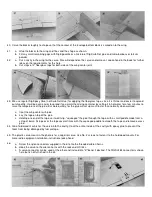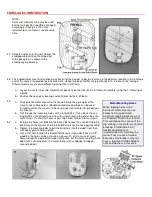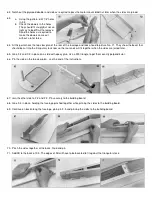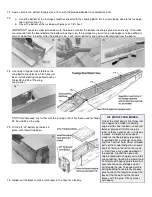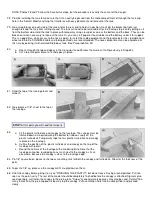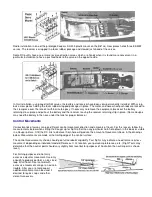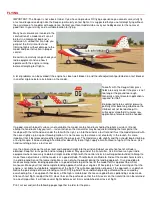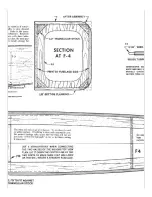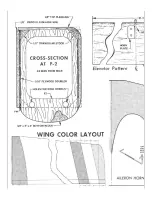
.
You should decide on which type of fittings you will use in the case of the cable
pushrods and have them on hand during fitting construction because the type
chosen will affect the location of the pushrod exit holes through the firewall, etc.
The balsa pushrods to the rudder and elevator are not limited as to location and
can be adapted to any of the types of connectors shown without preliminary
planning of exact position.
Some of the variety of detachable pushrod retainers for securing the push rod
wires to the servo that are available are shown here. Or you can make a "Z" bend
in the end of the wires to go into the servo. When a "Z" bend is used, the pushrod
must be put onto the servo outside of the fuselage and then threaded through the
fuselage, which is more difficult to manage than the pushrod alone, as is the case
when a retainer fitting is used.
5/16" square balsa sticks are provided to make the fuselage pushrods that run to the elevator and rudder. Bind the fittings
to each end with heavy thread and epoxy glue. Use threaded rods with HC links at the tail end of the pushrods so that
trimming adjustments can be quickly made. Straight pieces of 1/16" diameter wire are provided for the other end of the
pushrods to allow hookup with the servo arm.
PREPARING CABLE PUSHRODS
To keep ends of cable from
unraveling during handling, tin the
end with solder. Use a non-corrosive
paste flux (shown here is Kester,
available at hardware stores) and
rosin core solder. Have a hot iron
and flow the solder completely
through the cable.
Grind or file the end smooth. Bring it
to a point so that it will easily insert
into the pushrod fittings.
After the proper length is arrived at, sweat solder the area to be cut so that it
will not fray and unravel while being cut. It can be cut with a good pair of side-
cutting pliers, filed in two, ground through on the edge of a grinding tool, or cut
with a silicon cutting wheel on a motor tool.
RADIO EQUIPMENT INSTALLATION
The most convenient method of installing servos is on the plastic mounts which most radio equipment makers offer with
their outfits or as an accessory. These are screwed to hardwood mounting rails for fuselage servos or to hardwood blocks
for mounting in the wings. Instructions for the use of these mounts are included with them.
A flexible cable pushrod with nylon outer tubing (not furnished) is recommended for hookup of the throttle to the motor
control servo.
A variety of quickly detachable pushrod retainers are available from Sig Catalog for hooking the pushrods to the servos.
SIGSH184 pushrod retainers are recommended, or a solder clevis (SIGSH527) may be used.
Servos, for which plastic mounts are not available can be screwed directly to the two 3/8" square hardwood rails placed
across the cabin, three abreast, as shown in the accompanying drawing. With rubber grommets installed in the servo
mounting holes, mark the spots for drilling the pilot holes for screws. Space the servos at least 1/8" apart and do not have
then contacting the hardwood mounting rails except on the grommets. Using a washer on the wood screws, mount the
servos to the rails. Do not tighten the screws down against the grommets since this will cause vibration to be transferred to
the servos. The washer should just rest against the grommet without compressing.
The receiver battery pack should be wrapped in foam rubber sheet, held on with rubber bands. It is a good idea to put the
package in a small plastic bag, taped shut around the battery cable to protect the battery from leakage.
The receiver should be similarly wrapped up in foam rubber to protect it from engine vibration. Cover it with a plastic bag
also. Stow this package just in front of the servos. Make certain that the receiver will stay in place.

